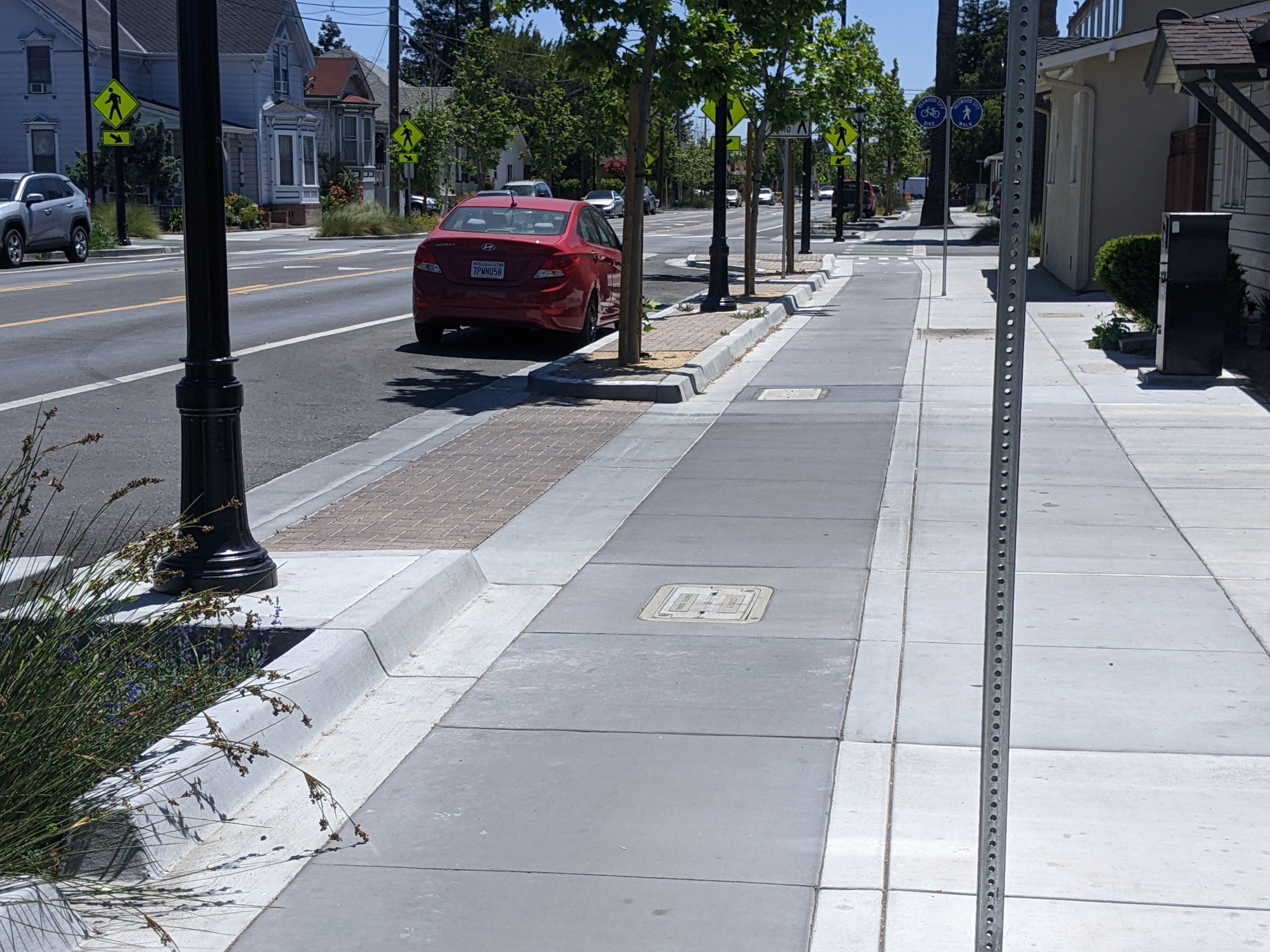For Bike to Wherever day, I thought about where I would go if I literally could bike wherever today. The answer, of course, is anywhere in the Netherlands.
So since my boss won't let me expense a 14-hour flight, I asked myself, what's the next best thing?
Earlier this month, advocate and researcher Marcel Moran Tweeted about Redwood City's new sidewalk-level bike lanes on a half-mile segment of Middlefield Road.
Redwood City showing OUT with this bike infrastructure 🥰 pic.twitter.com/JHplg6n8Ji
— Marcel Moran (@marcelemoran) May 8, 2022
"I think it's quite good, and certainly mirrors German/Austrian/Nordic approach," Moran wrote in an email to Streetsblog.
Indeed, just going from the pictures, it certainly does mirror bike lanes I've ridden on or walked along in Berlin, Dusseldorf, or anywhere in the Netherlands. So rather than formally participate in a Bike to Wherever day event, I thought I'd grab Caltrain and check it out for myself.
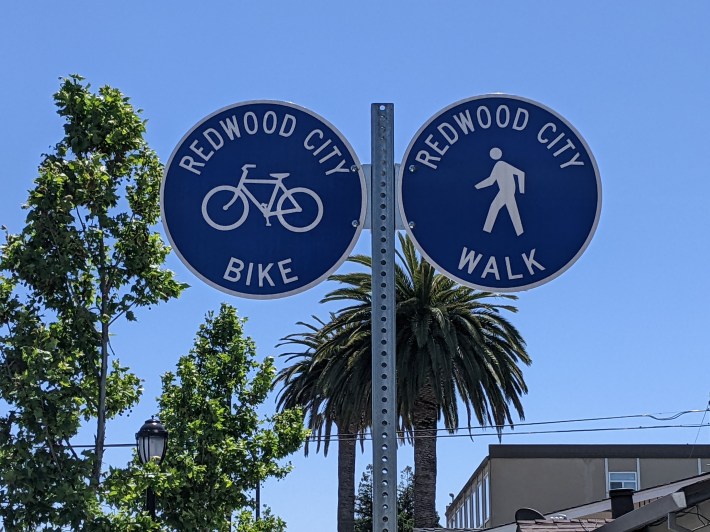
First, a bit of background from the Redwood City Pulse in February in a story about the ribbon cutting:
Residents and city officials gathered at the corner of Middlefield Road and Cassia Street to celebrate the completion of a years-long street renovation project.
The Middlefield Road Streetscape Project, which was first conceptualized over a decade ago, includes the removal of utility poles and overhead wires and undergrounding of all telecommunication lines and equipment between Maple Street and Woodside Road. Streets and sidewalks were also upgraded with new crosswalks, accessible curb ramps, protected bike lanes and landscaping.
“This is a special day,” said Mayor Giselle Hale, addressing the attendees. “In the ten years since this project has began, our downtown has experienced a renaissance. And today, with this ribbon-cutting, more residents will have safe pedestrian access to those amenities.”
So my impression of the project: may we have some more please?
There's lots city planners around the Bay Area can learn from this top-notch new bike infrastructure. For one, as seen in the picture above, cyclists are treated as a type of pedestrian--not a type of motorist. This is far more in keeping with Dutch philosophy and, frankly, just makes sense. The American idea that people on bikes should mix with motorists in fast, two-to-10 ton vehicles is and always was cracked. Designing streets based on such a counterfactual notion is just transportation malfeasance.
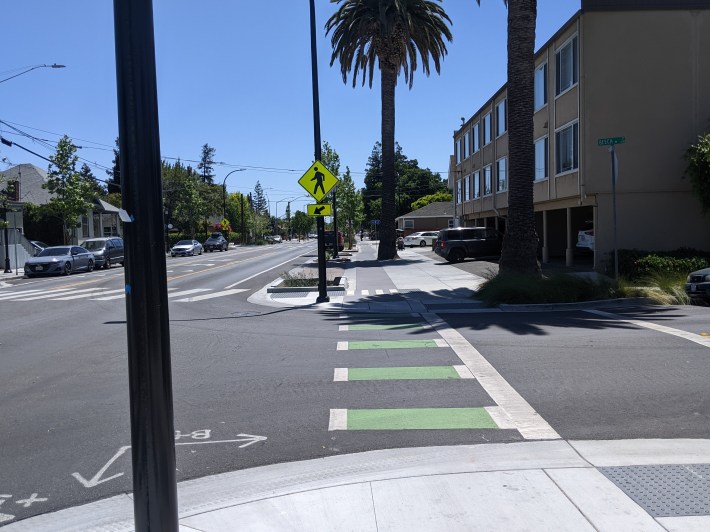
Secondly, I frequently hear the excuse that a protected bike lane, sidewalk-level or not, is too complicated because of driveways. But planners in Redwood City dealt with driveways very well--with selective use of a brick treatment to make it clear to motorists that they are entering bike and pedestrian space. The driveways are also relatively narrow and concrete bulbs and bumps make it hard to turn a car in quickly.
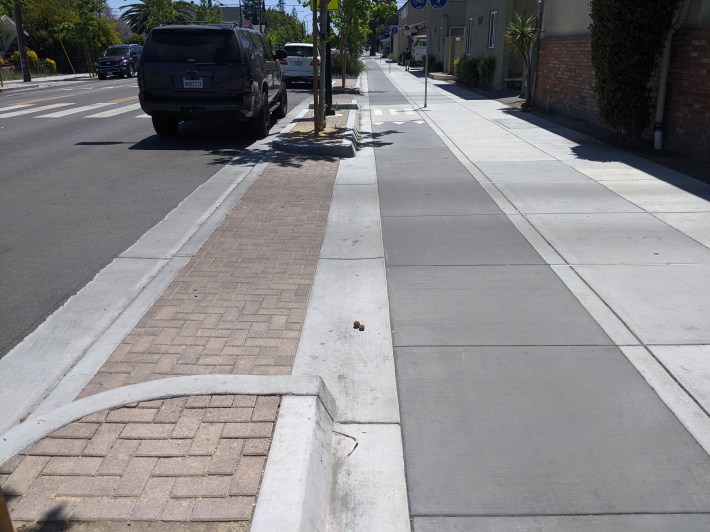
But this project isn't just about bikes. This is a "complete street" in nearly every way, with pedestrian improvements and well-thought out beautification. The water drainage treatments and plantings are also lovely and make the street feel inviting.
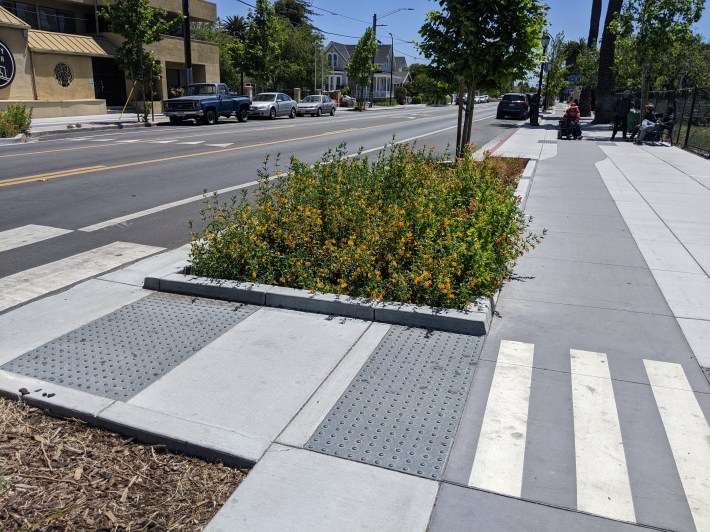
In areas with families, this is definitely the way to go. Still, Moran said he prefers a bit more space and separation from pedestrians when he's biking.
But overall, about the only thing to fault about the Middlefield project is the bus stops. There should have been bus boarding islands. Instead, the treatment forces buses to pull in and out of traffic. And some bus shelters are sorely needed. Benches under the sometimes hot Peninsula sun (or in a rainstorm) isn't enough.
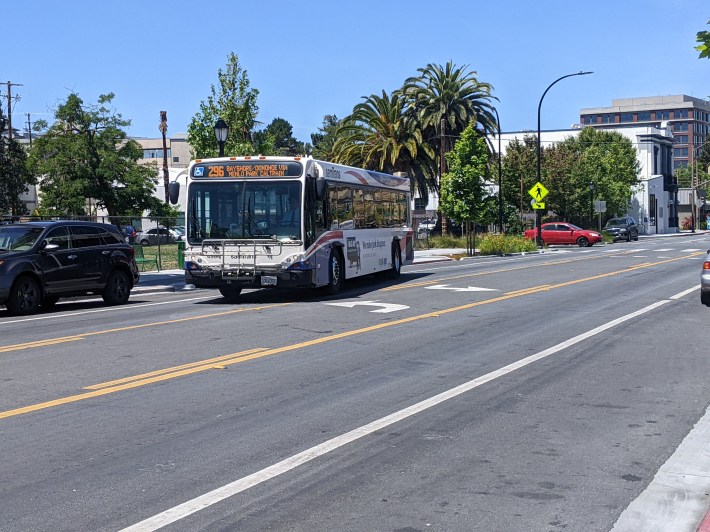
But other than that, the only thing really wrong with this treatment is it's too short. After just a few minutes of joyous riding cyclists are disgorged into the usual, dangerous, gutter pan lane, as seen below:
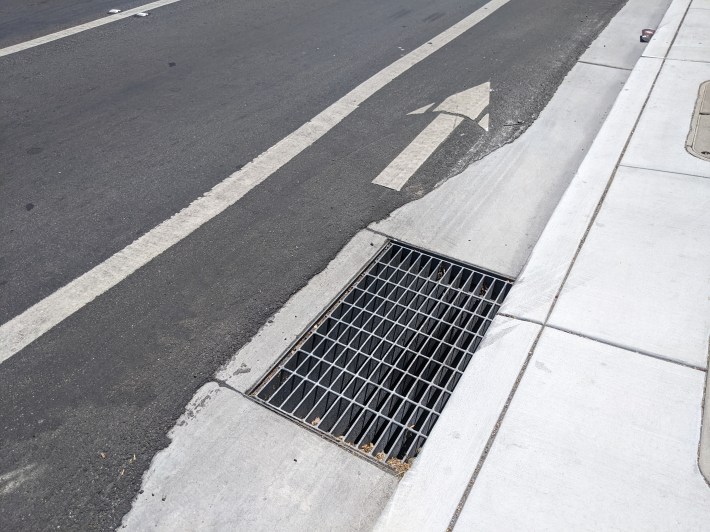
But more is coming. And Middlefield is a look into the future and how nice it might be, someday, to ride a bike to wherever, every day, in the Bay Area.
